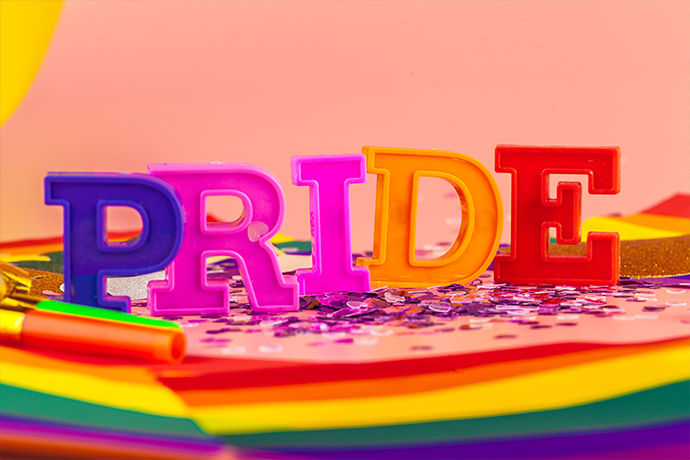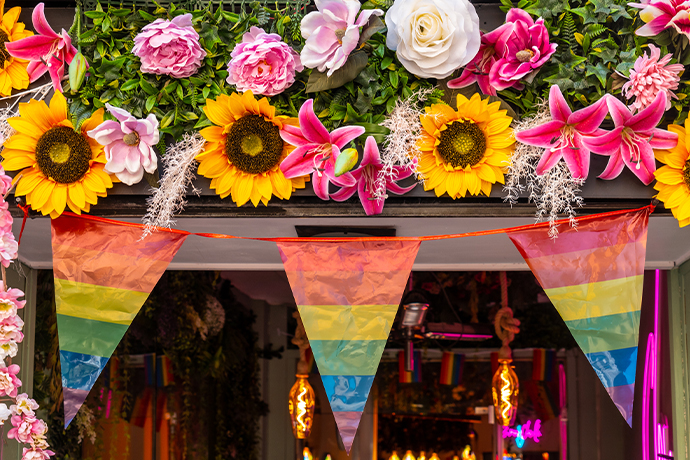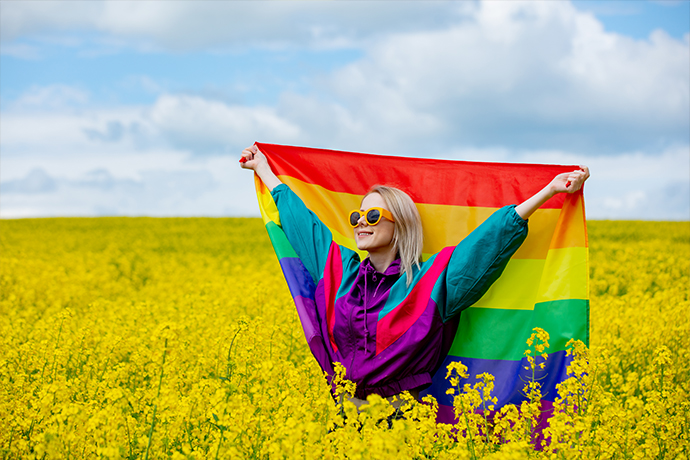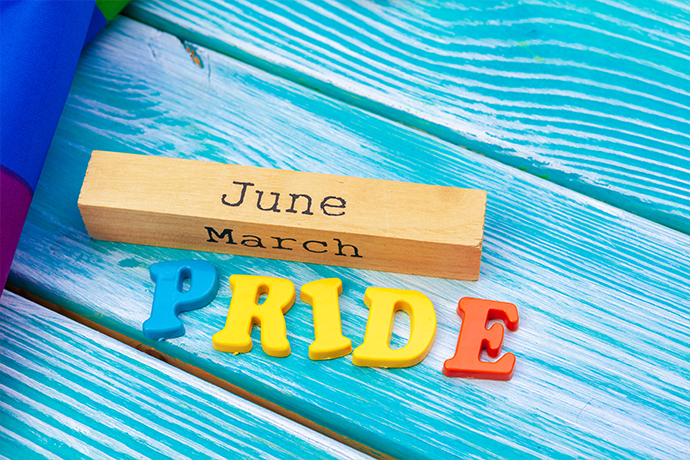 SPEAKERS
SPEAKERS
 TOPICS
TOPICS
Pride Month, celebrated annually in June, honors the contributions of the LGBTQ+ community to society, culture, and history worldwide.

Pride is an annual commemoration celebrated in the U.S. and countries all across the world, every year in June. Also known as Pride Month, the event recognizes and celebrates the efforts made by the LGBTQ+ community to the society, culture and history. Mostly, the pride month is celebrated in the month of June but in some parts of the southern hemisphere, this event is celebrated during other times.
Pride month is marked by marches, parades, events, remembrances and festivities throughout June. The celebration mainly starts on the 1st of June and culminates on June 28 to mark the anniversary of the Stonewall riots.
This month-long recognition gives an opportunity to the LGBTQ+ community to come together to celebrate the achievements of the last 50 years, recognize the setbacks of the community and reflect on the history.
Let’s learn more about the pride facts and history in this article.
During the early 1900s, few people from Europe and North America created lesbian and gay organizations like the Society of Human Rights. After World War II, some small publishing houses started growing vocal about gay rights. They demanded recognition for gays and lesbians and protested any discrimination.
Protests were held at several places violating local laws and demanding gay rights. Despite all these efforts and protests, civil rights were denied to lesbians, gays, transgender and bisexual people. Even during the late 1960s, in New York, it was legally prohibited to declare oneself as gay and the government outlawed gay bars. However, soon, one event in New York ignited the gay rights movement, leading to what we celebrate today as “Pride Month”.
The concept of Pride Month started with the Stonewall riots in New York City. On June 28, 1969, there was a police raid in a gay bar in lower Manhattan, Stonewall Inn. During the raid, the NYPD (New York Police Department) dragged employees and patrons which received resistance from the angry locals. Several people gathered on the streets and soon, the confrontations escalated, leading to violent clashes and a six-day-long protest.
Soon after the Stonewall riots, the gay rights movement, which was a fringe topic for politicians, became the front-page news.

A year after the Stonewall riots, several LGBT activists marched through the Manhattan streets. One of the marches, organized by the Christopher Street Liberation Day Umbrella Committee and ERCHO, was named the Christopher Street Liberation Day March. This was known as the first gay pride parade, which took place on June 28, 1970. It was a huge success as almost 3000-5000 people from the LGBT community, allies and supporters participated in this March.
Soon this march along with several other initial marches proved to be a turning point for LGBT rights.
The initial marches were more focused on honoring the Stonewall riots and pushing the liberation movement. However, gradually, it took the form of celebration and efforts of the LGBT community.
For her notable work in the Christopher Street Liberation Day March, Brenda Howard is recognized as the “Mother of Pride”. He is a bisexual woman and is a militant activist. She laid the foundation for the long pride celebrations which gradually turned into modern pride marches. In 1988, she also founded the New York Bisexual Network.

Gilbert Baker, a popular San Francisco activist created the symbol of the LGBTQ community and it was a rainbow flag. The first and original flag flew during the San Francisco parade in 1978. It was hand-dyed and stitched by thirty volunteers.
In 1994, during the 25th anniversary of the Stonewall riots, Gilbert Baker made the largest rainbow flag which was thirty feet wide.
The rainbow flag was considered to symbolize the rainbow of humanity with six colors representing six aspects of the LGBTQ movement. Baker gave different meanings to different colors; Red indicates Life, Yellow represents Sunlight, Green indicates Nature, Indigo represents Harmony and Serenity, Orange indicates Healing and Violet represents Light.
Philadelphia further added a brown and black strip in its flag to symbolize the people of color in this community.
At present, the rainbow flag has been accepted by many LGBTQ communities, and some of them added baby blue and light pink colors to transgender flag as well.
Pride month was not always a month-long celebration. Instead, it was basically recognized as a day of gay pride on the last Sunday of June. However, with the rising awareness, people from this community started organizing events and activities throughout the month. Gradually, it then evolved into a pride month.
Further, the then president of the U.S., Bill Clinton the month of June as Gay and Lesbian Pride Month.
Since then, the entire month of June has been celebrated as Pride Month and LGBT communities recognize their achievements and come forward to support their community.
In 2009, President Barack Obama gave this month a more inclusive name Lesbian, Gay, Bisexual and Transgender Pride Month to include the entire LGBT community. Following this, in 2016, Obama also honored the origins of Pride Month by creating a Stonewall National Monument around the Stonewall Inn.
In 2017, President Donald Trump declined the official recognition of this Pride month but then again recognized it in 2019.
During this LGBT history month, LGBTQ communities celebrate their culture, activism and achievements through film festivals, marches, art exhibitions, concerts and various other programs. All these events aim to increase knowledge and awareness about the community and also to honor the lives lost during the Stonewall riots.
Stonewall riots and the first pride marches in the initial month led to the rapid proliferation of LGBT groups. The pride movement spread all across the US and outside the world. As of now, there are many pride celebrations all around the world in urban areas during pride month. However, despite so many celebrations and acceptance all across the world, it is common to see killings and bloodshed during pride events, showing the oppression and unacceptance the LGBTQ community faces to date.
